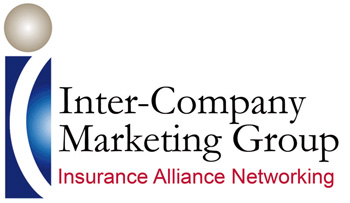By: Sheila Matheson and Kevin Christensen
Editor’s note: This article was originally published in “The ICMG Exchange,” a newsletter for members of the Inter-Company Marketing Group. ICMG is the premier association fostering strategic alliances and networking for the insurance and financial services industry. For more info visit www.icmg.org.
Essential elements of success in the life and health insurance industry are good products that are well sold. New products require that the distribution force, those agents and brokers who will present the product to its intended customers, understand and appreciate the product and its value. To enable that, the manufacturing insurance company must provide marketing materials and training. Below we’ve taken a look at the product/training continuum from the perspective of the manufacturer (the insurance company), and the distributor (the agent/broker).
Manufacturer Perspective

By: Sheila Matheson, Vice President, CI Marketing Optimum Re Insurance Company
We all know how much an insurance company invests in the process of developing a product or refitting an existing product. The project can move at the speed of light (in our dreams!) or, most often, at a glacial pace. By the time a product is ready to file, there will have been countless product development team meetings to make decisions or fine-tune decisions already made.
Ideally, at several points in the process the distribution will have been consulted for their input. Most often the sales professionals contacted for advice are longstanding, trusted agents/brokers, perhaps members of the company’s Advisory Council, all with a strong track record selling the company’s products.
Late in the process the product specs find their way into the hands of the marketing people for development of marketing messages and materials to support the sales process. These will include the glossy brochures trumpeting (within the restrictions of the compliance requirements) the product’s features and benefits, Producer Guides and sample policies, the applications and related materials. Then these marketing materials are distributed to existing agents and product launch activities invite new producers to sign on to sell the new product offering.
Of course in the current world, new products often involve new software to be used by the agent/broker in the sales process. The product development team tidies up the loose ends and those charged with producer training will swing into action in support of the new product.
The company is mindful of the cost it has incurred in the development and filing this new product and will expect the training to proceed as a low cost, relatively simple requirement so the agents and brokers whose job it is to sell the product get the information they need about the product and its features.
STOP! What’s wrong with this picture? We insurance company product developers and managers see the product as the value component of the process. More often than not, we watch the production numbers following rollout and are disappointed in the speed with which sales ramp up. We tell ourselves that we did a solid job of product design, pricing, promotion and we know we invested lots of energy in agent/ broker training. So what’s the matter with our distribution? Why haven’t they jumped on this great new sales opportunity?
We as an industry consistently do a poor job of agent/broker communication about new products! We see these guys as sales representatives who must know and understand every nuance and detail of the product they are presenting so we train them about the product details. They are sales people so of course they will be able to figure out how to present the product and sell it to their consumer. They are commission—driven so of course they will be eager to add this product to their presentation portfolio.
That is where we make a big mistake. If my income and credibility with my clients and prospects depends on my ability to present a compelling argument on behalf of the product I am presenting, I must first believe in its value. I must be willing—and able—to learn a new sales story. I need product details but only if I am motivated to sell the product.
Is it possible that our distribution might need more from us? Is it also possible that a little more investment in the right kind of support would pay off handsomely?
Distribution Perspective

By: Kevin Christensen, Manager, Sales, Illinois Mutual
Insurance companies have seemed to turn the corner! They are now asking for feedback, opinion, and advice from distribution throughout the life cycle of creating and producing a new product for the marketplace. The distribution channels of an insurance company have been filling the proverbial “suggestion box” for decades and insurance companies are partnering more often with their agents to win over the consumer.
Insurance companies realize their distributions (agents) are the ones who are selling their products every day and know exactly what the consumer is wanting to purchase. In discovering their new allies, insurance companies have found true partners who have a great understanding of the tough decisions that have to be made along the way. But, as always, distribution is still asking for one little modification to the newly discovered mutual agreement: Provide better training to accompany the new (and even better) product!
Distribution is well aware of the fact that the insurance company has to look at its bottom line and constantly search for the return on investment. Agents not only understand this, but realize they live on the same basic principle themselves. They are business minded and know how critical time and money are in rolling out new products and the effort that it requires. They also want the new product they are going to attempt to sell to become profitable and productive as soon as possible. And while both distribution and the insurance company both agree that training for this new product is critical, here is where we find a slight shift in thought.
The insurance company often creates its training based on making sure distribution is aware of every detail of the new policy. This makes sense from their perspective. The work going into every detail of the new product is a costly and timely endeavor, and they want the agent to know every aspect of what they have created. However, distribution understands that while this is important, it will take time and will have to be learned along the way and not all at once.
It should not be a shock for the insurance company that the agents want to have their cake and eat it too! Distribution is more concerned with the “sweet spots” of the product and the “hooks” that will differentiate them from their competitors and also attract the prospects. Agents know that selling is all about telling a story. They know the “book” the insurance company authored might be a masterpiece and are more than willing to read it, but they want to know the highlights first so they can share them with the client and get the client as excited as the insurance company was able to get them.
Three things to remember when training agents on a new product:
Don’t forget the “sweet spots” of the new product!
Product specifications are important, but the reason they are there is to attract the consumer to purchase the product and keep it. The logic behind the specification is what distribution wants to know. This is what they will use to sell the product.
Know your audience (segment the training)
We all know there are many different learning styles out there. We also know there are now even more mediums out there to deliver your training to distribution. Insurance companies need to make sure they offer as many different training methods in as many mediums as possible. Distribution needs to be able to choose from these offerings for what will help them sell the new product better. If you limit the scope of your training you will also limit the distribution.
ROI is critical to both parties
The insurance company wants return on their investment. We know this, but we need to remember so do agents. Investing in training is costly for distribution as well as the insurance company, regardless of whether the training is provided by the insurance company. Distribution needs to know that the time invested away from the field is priceless to the agent. An insurance company can be hurt dramatically by acquiring a reputation of providing meaningless and time wasting training to distribution.
